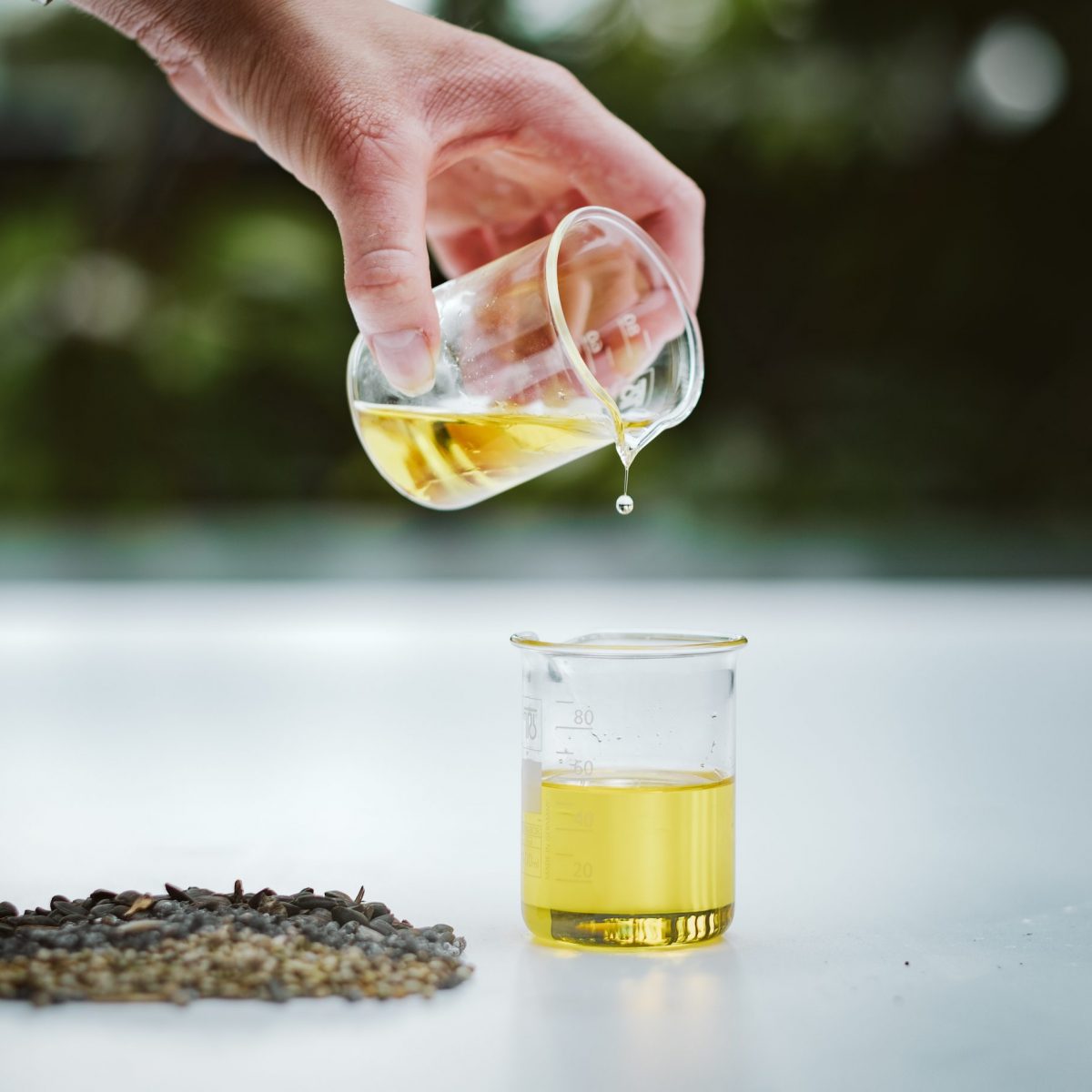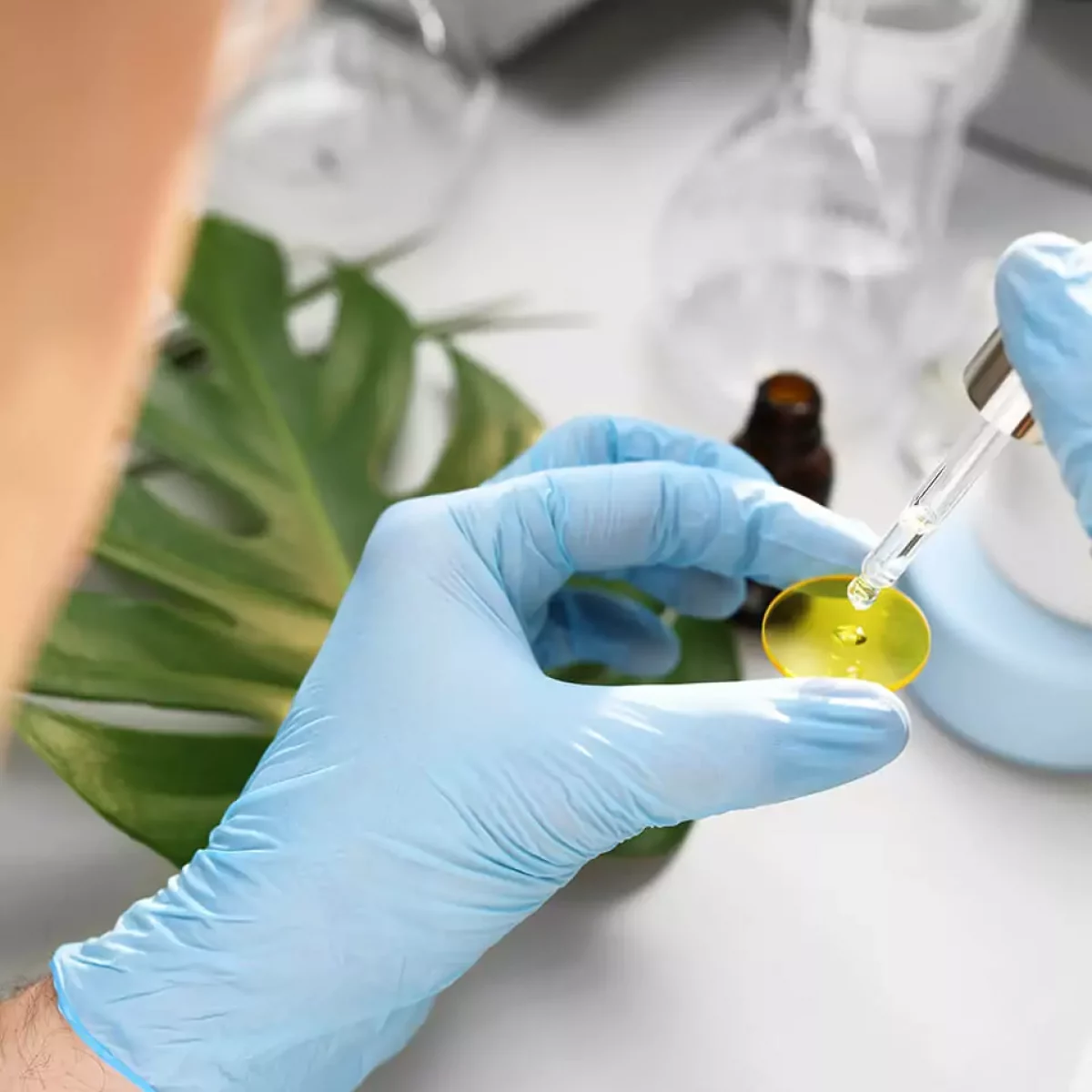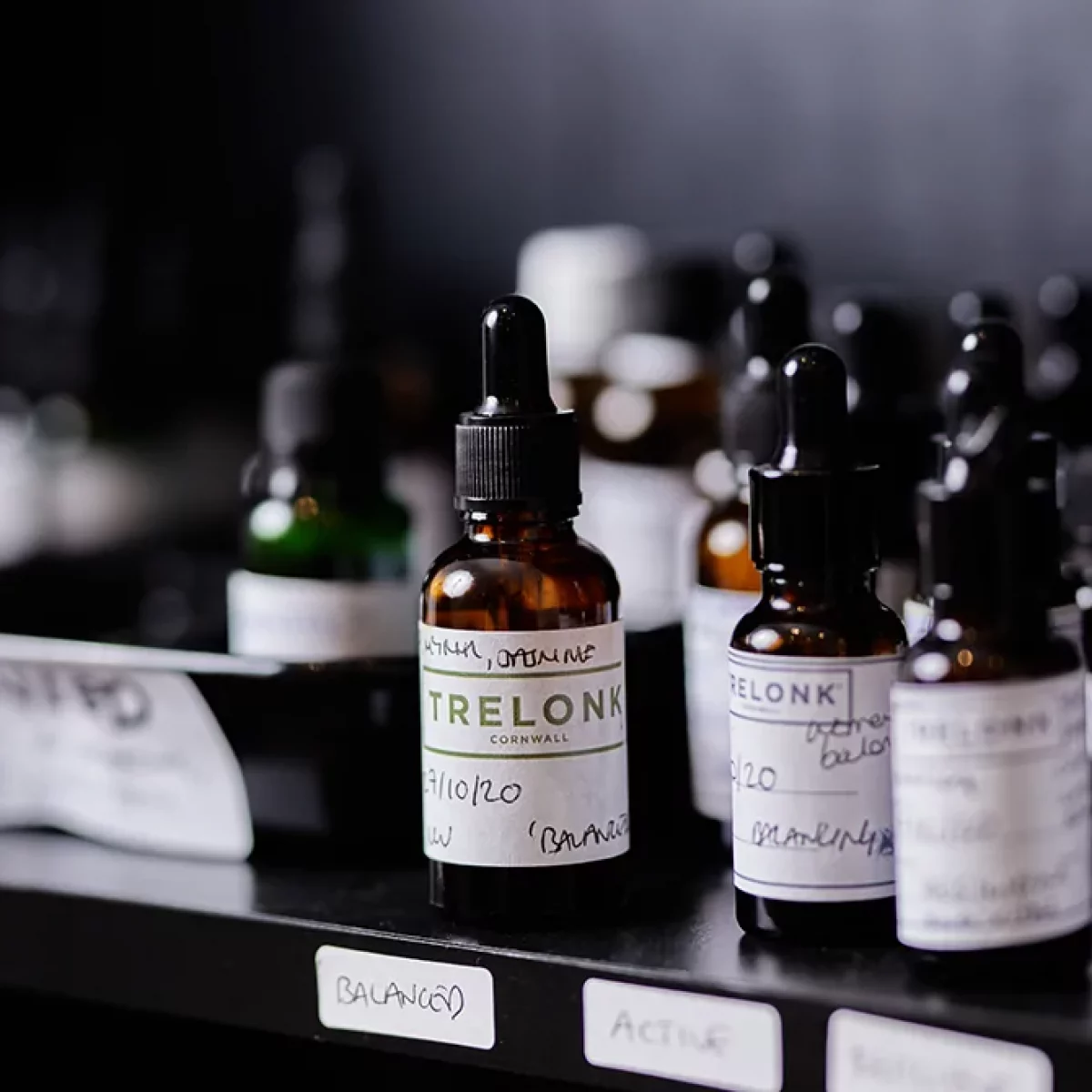- Learn about
Whole Plant Therapy
Our expert aromacologists use cutting edge extraction technology to pin-point the most powerful plant molecules for our targeted essential oil formulas. We then boost our formulas with active ingredients, known as terpenes (aromatic compounds) which support healthy neurotransmission in the body. It’s this combination that creates the most high-impact wellbeing solution, known as whole plant therapy.

The science of Terpenes
Terpenes are aromatic compounds that are found in almost all living plants and comprise the largest single class of compounds found in essential oils. In plants, terpenes have many functions such as in defence against herbivores and in attracting beneficial organisms such as pollinators. Terpenes may also be antiseptic, antibacterial, calming and balancing, great for soothing everyday aches and pains, intensely cooling and soothing for hot conditions in the body.
We have hundreds of different olfactory receptors in the nose that recognise terpenes in the environment. These receptors shoot messages through neurones (nerve cells) to the brain to trigger a response. The nose is therefore a super-efficient terpene delivery mechanism and the effects of inhalation are apparent in less than a minute.
The Molecular Families we use
There are several families of molecules in plants that are found in essential oils. We’ve talked about the group of hydrocarbons known as terpenes known to have abundant therapeutic benefits, but there are other families, which each add to the potency and effectiveness of essential oils. These molecule families are the Phenols, Alcohols, Aldehydes, Ketones, Acids, Esters, Lactones, Coumarins and Oxides.
These molecule families have different therapeutic properties. For example, phenols can be antiseptic and antimicrobial, they can also stimulate and boost the immune system. Aldehydes are extremely volatile molecules and have the most powerful aromas. Ketones are non-aromatic but are deeply calming and help to support a healthy respiratory and digestive system.


Supercritical CO2 and why we use it
By using heat and pressure, it is possible to transform CO2 (which normally exists as a gas) into a supercritical state, in which the CO2 possesses the properties of both a gas and a liquid. This supercritical CO2 can be used as a green alternative to traditional organic solvents for the extraction of essential oils from plants. Supercritical CO2 extraction has three main advantages over traditional methods:
- No organic solvents are required and so there are no issues or environmental concerns associated with their storage and disposal.
- The essential oils diffuse faster in supercritical CO2, which allows for faster extraction.
- Supercritical CO2 is better at penetrating into small pores that are inaccessible to liquid solvents, which allows for a more thorough extraction.
Many of the essential oils that we use here at Trelonk have been extracted using supercritical CO2, and we aim to be able to extract all of our carrier oils using this method in the near future
NAtural Aromas in Essential Oils
Every person absorbs and identifies aromas differently. Smells are stored by the brain in the limbic system. This becomes a memory library that is dependent on your environment. Basically if you’ve never smelt an aroma before, you cannot recognise the fragrance.
Essential oil fragrances are prepared using aroma notes known as the top, heart and base;
- Top notes are elusive and flirtatious – they are the aromas we distinguish first and quickly disappear.
- Heart notes are the second wave of the fragrance and are heavier in molecular weight. They are the more intense tropical flowers, fruits, spices and herbaceous notes.
- Base notes are balsams, roots and woody notes and the heaviest aromatic compounds. You may not smell them initially, but they linger and will be the last remaining scent when you return to the aroma later on.

- Learn about
Core Ingredients

The sweet citrus peel has soft floral tones and a refreshing aroma. With its high content of vitamins and nutrients, Green Mandarin is mood affirming and works to provide reassurance during times of intense stress.

With an intensely sweet and fruity scent, Bergamot helps to maintain a balanced mood. Studies have shown that the inhalation of bergamot essential oil is effective in improving an individual’s mental health and wellbeing. High content of limonene, linalool and linalyl acetate terpenes are proven stress busters.1

A bright and uplifting essential oil, Yuzu’s aromatic effects have shown to be mood affirming. Pharmacopeia suggests Yuzu is deeply soothing when the strong citrus aroma it releases is inhaled.2

An exotic essential oil has powerful uplifting qualities and supports a healthy cardiovascular system. Ylang Ylang presents a calming and comforting element to an essential oil blend.3

The rich, sweet and floral Rosa Damascena essential oil has various benefits to the human condition. Rosa has great skin health benefits and acts as a comforting and uplifting agent, brightening your mood.4

With a rich honey-like scent, Helichrysum contributes to the heart notes in essential oil blends. Reported to have anti-septic and antibacterial effects, this essential oil is reparative and replenishing.5

Eucalyptus Staigeriana is quite different to other species of Eucalyptus as it has a softer, more subtle lemon aroma instead of the harsh bitter menthol scent of others. It can be beneficial for everyday aches and pains, toning muscles and respiratory inhalations. Its antibacterial properties are particularly effective and cleansing.6

An essential oil which has been extracted from the leaves of a bitter orange tree, Petitgrain has a refreshingly sweet heart with woody undertones, adding weight to the blend and supporting the emotions. Dropped into a diffuser or a warm bath promotes a relaxing environment, enabling you to reset your mind.

One of the oldest known aromatics, the sweet, yet woody scent released from Indian Sandalwood calms the mind and acts as a mood affirmer. Re-discovered in modern medicine, research has shown Sandalwood to have a range of pharmacological effects.7

High in linalool and linalyl acetate, HA Lavender releases a sweet, herbaceous aroma, contributing to relaxation and leading to the feeling of rejuvenation. The altitude changes the molecular make up. The compound linalyl acetate has a vast amount of benefits which not only prepares you for deep, restful sleep.8

Clary sage (Salvia sclarea) is a flowering herb that’s native to the Mediterranean Basin. It has a clean, refreshing scent and is also known as “clear eye” because of its traditional use as a benefit for eye health. Clary Sage is a natural antimicrobial agent and the plant can be used as a reparative for the skin.9
Neroli oil is an essential oil produced from the blossom of the bitter orange tree (Citrus aurantium). Its scent is sweet with rich, honey tones. Neroli’s primary functions are to revive and cleanse with studies revealing that neroli is particularly beneficial for menopausal and post-menopausal women in supporting cardiovascular health. Neroli is a subtle stress buster.10
Sweet marjoram is a warming, woody oil known for its calming properties. This herb is often used is Mediterranean cooking and the essential oil is gleaned from its aromatic leaves and flowering tops. The oil is packed with terpenes including gamma terpinene, alpha pinene, sabinene hydrate and terpineol. These terpenes provide the oil with anti-inflammatory, antimicrobial and antioxidant properties, which make the oil great for soothing muscular aches and for tackling tiredness.
Reference: “Sweet Marjoram (sagepub.com)
Besides from research suggesting that Vetiver has antioxidant activities, the “Oil of Tranquillity”, as otherwise known, contains the sesquiterpene, Thujopsene, which has shown to be a powerful agent in relaxing the body. A deep, earthy scent that is grounding and perfect in aiding the user to let go.12

CO2 Ginger (zingiber officinalis) has a fresh, uplifting aroma similar to freshly cut ginger root very different to the steam distilled version which is not so vibrant. CO2 Ginger is said to have more soothing properties due to the presence of gingerols and shogaol which are the phenolic compounds isolated during extraction.13

Curcumin, an active ingredient within Turmeric is deeply reparative at a molecular level. Pharmacopoeia has suggested that Curcumin promotes energy flow and relieves everyday aches and pains. CO2 supercritical extraction creates a premium-quality, clean oil, maintaining the benefits, leaving no toxic by-products.14

So far biologists and botanists have discovered more than 40 species of lavender of which there are over 400 varieties. Each has the potential to yield different types of lavender essential oils with subtly different benefits to health. French Lavender is a member of the Lamiaceae family which is packed full of antiseptic, antimicrobial and antioxidant properties.15

Eucalyptus globulus is a species of tall, evergreen tree native to southeastern Australia. Eucalyptus oil is used to support a healthy respiratory system. The oil is extracted from Eucalyptus leaves which are a great source of antioxidants, particularly flavonoids, which protect your body.16

Rosemary, the refreshing, herbaceous plant we all know and love is much more than a lovely scent or great with lamb dishes. Research indicates that inhaling rosemary oil (Rosmarinus officinalis) is cephalic and helps to support thinking, concentration and memory. It may also aid your memory as you age, but more research is needed. Rosemary is not safe for people with epilepsy or those who have convulsions.17

Extracted from the berries by steam distillation, most recognised as one of the botanicals used for the formulation of gin. Juniper oil has a fresh woody balsamic aroma profile with a large number of terpenes in its composition such as pinene, myrcene, sabinene, limonene, cymene and camphene among others. Juniper is steeped in history as a remedy for supporting a healthy urinary and respiratory system. Juniper is deeply cleansing for the skin, antiseptic, astringent, it stimulates blood vessels and lymphatics removing waste material post exercise, calming and soothing everyday aches and pains in muscles and joints.
Also called Olibanum, Frankincense was used in Ancient Egypt in rejuvenating face masks, cosmetics and perfumes. A fresh resinous, terpene top note with rich, warm, sweet balsamic undertones. Frankincense is steeped in monoterpenes such as pinene, limonene, thujene, phellandrene, cymene, myrcene and terpinene among others. Frankincense has a very powerful effect on slowing down and deepening breathing which is very useful during anxious and stressful moments. It supports a healthy respiratory system and is used by pharmaceutical companies in throat lozenges and cough remedies. Frankincense is great supportive oil for the maintaining healthy mental wellbeing as well as being a deeply reparative oil for the skin. It is used in many cosmetic products for refreshing mature skin, soothing irritated skin and as a fixative in the perfumery world.

A deep blue essential oil, Chamomile is a strong, yet a sweet, herbaceous oil. Rich in Chamazulene, a molecule which is derived from sesquiterpenes, Chamomile releases a strong aromatic odour, which can be described as deeply relaxing, calming and anti-septic.20
Also known as Joy of the mountain, common basil or sweet basil, this herbaceous oil reminds us of summer salads, accompanying tomatoes, the leaves of the herb scattered onto pizzas. The oil is extremely aromatic with its sweet, spicy aroma with balsamic undertones. Basil oil and the herb features in many ancient medicinal practices such as Ayurveda where it is known as tulsi, as well as extensive use in Traditional Chinese Medicine for improving blood circulation and digestion and for stomach and kidney wellbeing. Great for improving mood, antiseptic, stimulating the brain for concentration and focus, soothing nerve endings. Do not use during pregnancy or if epileptic.
A sweet, warming, comforting oil extracted by cold expression from the peel of the orange fruit. Intensely uplifting and mood improving, orange oil has many therapeutic properties and is easily recognised for its seasonal connection from summer holidays in the Mediterranean to warm Christmas blends. Like most citrus oils it has antiseptic, antibacterial, calming to the nervous system but stimulating to the digestive and lymphatic systems. Sweet orange is a powerful oil to improve mood and supports healthy mental wellbeing.
A fresh, dry, woody, spicy oil that in its very nature warms and soothes in blends for everyday aches and pains. Strongly antiseptic, antimicrobial, creates an erythema when applied to the skin and is a stimulant to the nervous, circulatory and digestive systems. A general tonic for body and mind. Extracted by steam distillation from the dried, crushed black peppercorns. This oil is a must have for muscular blends for pre-sport to warm up the muscles and post-sport to stimulate to removal of any built up lactic acid in the muscles, supporting healthy muscles and joints for the sporty.
With a sweet citrus scent, Lime oil is known for its purifying and uplifting properties. Lime contains compounds such as alpha-pinene, limonene, cineole and many more which have a wealth of benefits. Traditionally, limes were used to relieve common colds and flu, yet today they have proven to have good anti-septic and antioxidant properties.24
Large yellow green citrus fruit with a refreshing, sweet citrus aroma, less sharp than lemon but not as sweet as orange. Uplifting, deeply cleansing for both the skin and digestion, this oil is extracted by cold expression of the peel usually discarded after juice extraction. Antiseptic, astringent, toning, stimulating to the lymphatic system helping to eliminate excess fluid. Around 90% Limonene which is a terpene known for its mood improving properties.

